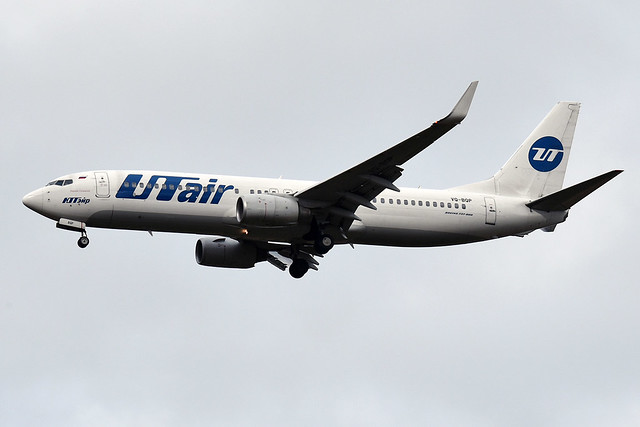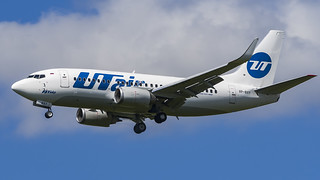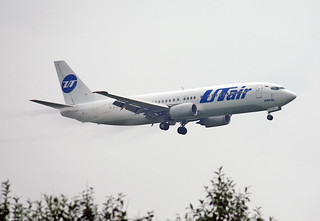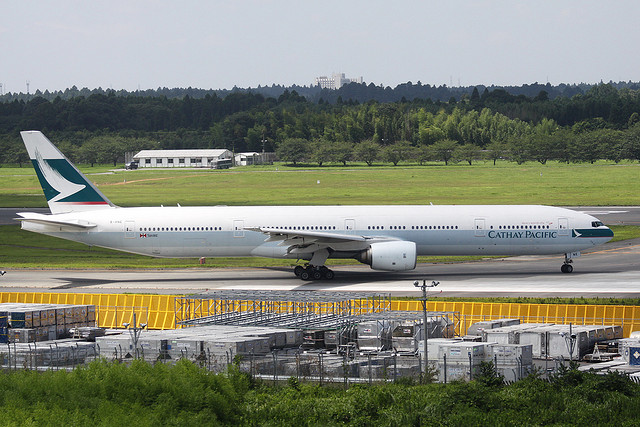UTAir AT72 near Tyumen on Apr 2nd 2012, lost height in initial climb
Last Update: October 9, 2013 / 14:21:18 GMT/Zulu time
Incident Facts
Date of incident
Apr 2, 2012
Airline
UTAir
Aircraft Registration
VP-BYZ
Aircraft Type
ATR ATR-72-200
ICAO Type Designator
AT72
In violation of procedures set forth in the flight manuals the crew performed the takeoff without having the surfaces of the aircraft deiced, although the crew detected snow and ice deposits during taxi. Consequently the aerodynamic properties of the aircraft deteriorated so that it stalled during initial climb, the crew did not recognize the stall and thus was not able to return the aircraft to within flight envelope.
Contributing factors
- Deficiencies in UTAir Safety Management, that exists only on general terms and is not adopted to address specific activites in all areas of the company, which prevents timely detection and addressing risks affecting safety of flights
- Deficiencies in UTAir Technik in terms of staff training and work supervision in relation to deicing processes, manifested in a number of non-compliances with requirements of manuals, leading to admission of non-trained staff for assessment of necessity of de-icing and application of de-icing procedures
- Deficiencies in the initial and recurrent training of flight crew to understand the severity of takeoff without de-icing applied and the consequences for aerodynamic properties as well as the purpose and use of aircraft anti-ice systems, which prevented the crew to abort taxi for departure and apply de-icing procedures after detecting snow and ice deposits.
- Methodical shortcomings of programmes for simulator training for flight crew detect onset of stall, recognize stall patterns and avoid entering stall.
- Increasing demand of training facilities due to increasing number of flight crew to satisfy growth of traffic together with the absence of a safety management system leading to formalism and methodical omissions in the work of instructors preparing flight crew to develop skills in making informed decisions and strict observance of rules and procedures.
- Possible crew fatigue to violations of work and rest times
On Oct 9th 2013 the French BEA released the English version of the draft final report (not the actual final report).
The crew had flown the aircraft into Tyumen the previous afternoon and had parked the aircraft over night in temperatures around 0 degrees C, humidity of 100% and weak snow and rain fall. Following a night rest at the airport hotel the crew began preflight preparations including consulting weather offices. The commander subsequently decided to depart.
The commander (28, ATPL, 2,602 hours total, 2,522 hours on type) performed a rapid walk around, according to airport surveillance videos he needed a few seconds to get to the right hand engine, proceeded along the side of the fuselage, stopped the left main landing gear, then entered the cabin. The commander, pilot flying, was assisted by a first officer (24, CPL, 1,825 hours total, 1,765 hours on type) as pilot monitoring. Both their command of English did not allow them to understand the contents of training materials provided in English.
During taxi out the commander instructed to activate the aircraft's anti ice systems, including the de-icing boots, during a delay in taxiing due to another aircraft in the way. A subsequent communication between the pilots suggested that the de-icing boots had been activated due to the commander spotting snow and ice on the wings.
The crew set the flaps at 15 degrees and commenced the takeoff run, the aircraft became airborne at 127 knots. When the aircraft climbed through 640 feet AGL at 139 knots, the crew began to retract the flaps, at 690 feet AGL and 150 knots the aircraft developed a spontaneous right roll, the autopilot was disengaged, stall warnings activated and continued to impact, the bank angle reached 40 degrees to the right, then aileron and rudder were applied. The aircraft now rolled left, the crew applied full aileron to the right but could not stop the roll. The aircraft impacted ground with a pitch of 11 degrees nose down and 55 degrees of left bank at a vertical speed of 3900 fpm. Of the 43 people on board all 4 crew and 29 passengers died, 10 passengers survived with serious injuries. The aircraft was destroyed.
Post impact and post fire photos still showed snow and ice deposits on the horizontal stabilizer.
Examination of the wreckage revealed no malfunction prior to impact.
The MAK analysed that ICAO level 4 language skill does not warrant training materials in English could be understood. The ICAO language proficiency does require speech activity to comprehend instructions by ATC and speak to ATC only. The ability to read or write is not required.
The MAK analyed that during preflight preparation of the accident aircraft three Boeing 737s departed, all had been de-iced. In the 90 minutes prior to the accident a total of 9 aircraft, including 4 UTAir aircraft, had departed, all had been de-iced. Another ATR-72 parked at Tyumen over night showed a snow and ice accumulation of 3cm on the top of the wings and stabilizers, partly supercooled as result of a supercooled rain that occured throughout the evening and night. This ATR-72 had been deiced and departed without incident just prior to the accident aircraft.
The MAK analysed that neither ground staff handling UTAir Aircraft at Tyumen had been licensed or held certificates of training. Ground staff had received instruction on de-icing for about 30 minutes.
After the other ATR-72 had been de-iced by ground staff, the accident aircraft was being handled, ground staff inspected the aircraft but did not detect any trace of snow or ice on the surfaces and declared the aircraft clean. The MAK however analysed that without the use of ladders, just by visual inspection from the ground, snow and ice accretion can not be detected.
The final defense was breached when the commander performed a quick walk around finishing the inspection within seconds. After the commander had entered the aircraft, the ground mechanics entered the aircraft, too, and informed the commander that the aircraft was clean.
Following takeoff the crew engaged the autopilot and set the speed target to 170 knots, which was never achieved, the highest speed recorded was 152 knots. Immediately after the flaps were selected up at 139 knots, the aircraft entered a right roll, the autopilot disengaged and the stall cricket sounds activated. The MAK analysed that subsequent movements of the aircraft indicate that the aircraft had entered deep stall leading to impact at high vertical but little horizontal speed.
Incident Facts
Date of incident
Apr 2, 2012
Airline
UTAir
Aircraft Registration
VP-BYZ
Aircraft Type
ATR ATR-72-200
ICAO Type Designator
AT72
This article is published under license from Avherald.com. © of text by Avherald.com.
Article source
You can read 2 more free articles without a subscription.
Subscribe now and continue reading without any limits!
Read unlimited articles and receive our daily update briefing. Gain better insights into what is happening in commercial aviation safety.
Send tip
Support AeroInside by sending a small tip amount.
Related articles
UTAir B735 at Moscow on Mar 8th 2022, rejected takeoff results in runway excursion
A UTAir Boeing 737-500, registration RA-73045 performing flight UT-379 from Moscow Vnukovo to Syktyvkar (Russia) with 58 passengers and 5 crew, was…
UTAir B738 at Tyumen on Dec 25th 2021, rejecgted takeoff due to engine failure
A UTAir Boeing 737-800, registration VQ-BQP performing flight UT-9875 from Tyumen (Russia) to Yerevan (Armenia), was accelerating for takeoff from…
UTAir B735 at Ufa on Nov 22nd 2021, cabin pressure problems
A UTAir Boeing 737-500, registration VP-BXY performing flight UT-677 from Ufa to Kogalym (Russia), was climbing out of Ufa when the crew stopped the…
UTAir AT72 near Ufa on Aug 25th 2021, electronic failure
A UTAir Avions de Transport Regional ATR-72-212A, registration VQ-BLD performing flight P2-281 from Ekaterinburg to Samara (Russia) with 66…
UTAir B734 near Samara on Aug 13th 2021, flat battery
A UTAir Boeing 737-400, registration VQ-BIC performing flight UT-358 from Samara to Moscow Vnukovo (Russia), was climbing out of Samara about 20…
Newest articles
Virgin Australia B738 near Hobart on Jul 21st 2025, fire in cabin
A Virgin Australia Boeing 737-800, registration VH-YFY performing flight VA-1528 from Sydney,NS to Hobart,TA (Australia), had been enroute at FL380…
Cathay Pacific B773 at Manila on Dec 16th 2025, runway incursion
A Cathay Pacific Boeing 777-300, registration B-HNE performing flight CX-918 from Manila (Philippines) to Hong Kong (China), was taxiing for…
Subscribe today
Are you researching aviation incidents? Get access to AeroInside Insights, unlimited read access and receive the daily newsletter.
Pick your plan and subscribePartner

ELITE Simulation Solutions is a leading global provider of Flight Simulation Training Devices, IFR training software as well as flight controls and related services. Find out more.
SafetyScan Pro provides streamlined access to thousands of aviation accident reports. Tailored for your safety management efforts. Book your demo today
AeroInside Blog
Popular aircraft
Airbus A320Boeing 737-800
Boeing 737-800 MAX
Popular airlines
American AirlinesUnited
Delta
Air Canada
Lufthansa
British Airways





